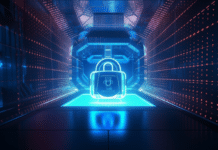Cyberattacks have become a regular occurrence in today’s connected world, with no company seemingly safe from the menace of cybercrime. Despite the billions of dollars companies invest in implementing cybersecurity products and solutions, the most effective control remains that intangible thing called a Cybersecurity culture. Simply put, a well-trained workforce is more effective at stopping cybersecurity incidents than any technical control. In this article, we go over some strategies that can help create such a workforce and, more importantly, maintain it.
Tips for Creating an effective cybersecurity culture
A cybersecurity culture can be defined as the shared values and beliefs that shape employee cybersecurity practices and behavior within a company. These beliefs must be cultivated over time through various methods to create a security-focused mindset. Done correctly, this also helps the employees to feel a sense of ownership about the company’s assets instead of feeling that this is only the responsibility of the cybersecurity team.
Employees should own and embrace their role in securing a company’s assets and realize that any security violation can have serious consequences for the company.
Following are a few of the strategies that can be used.
1 – Create a practical cybersecurity policy
A cybersecurity policy is simultaneously the most important and neglected part of a cybersecurity culture. Too often, this document is only read at the time of employee onboarding and forgotten about, except during the annual cybersecurity training. For a cybersecurity policy document to be effective, it must be tailored to the company and kept as succinct as possible. Employees should be aware of these important principles via various interactive methods such as screensavers, desktops, posters, etc., instead of just being expected to read and remember a document.
2 – Creating an engaging Cybersecurity awareness program
Another critical component of the cybersecurity culture is the awareness program which is how employees are informed of the company policies, threats to avoid, and best practices to follow. Simply expecting employees to sit through PowerPoint presentations is another way to make them disinterested in learning about cybersecurity. Numerous ways, such as gamification of cybersecurity awareness sessions, competitions, prizes, etc., can engage employees and make them actively feel involved in the training.
3 – Creating an open-door policy
Employees should always feel empowered to approach the cybersecurity team and not have a negative perception of them. A collaborative culture is created by encouraging an open-door policy where employees can come and ask questions/report possible incidents at any time. This can be physical or online through a simple ticketing system or website. Another way of doing this is via regular meetings, workshops, or virtual forums where employees can freely ask any questions and highlight concerns
4 – Effective incident response planning
Incident response planning is not exclusive to the cybersecurity team but is something all employees should embrace and own. Usually, non-tech-savvy employees are social engineer’s primary targets and become the entry points for most cyber attacks. Make sure they are aware of how to report cybersecurity incidents and any suspicious events with minimum friction in place. Employees should be made part of regular drills and red teaming exercises so they understand the importance of such events and how to prepare against them.
5 – Effective monitoring of behavior
Despite all the cybersecurity awareness training and tips you provide, there will always be employees that will try to bypass controls in violation of the policies. Implementing intelligent monitoring that informs you when security policies are violated is essential. It is also vital not to over-police employees as that will only result in an atmosphere of distrust and cybersecurity being perceived negatively. Monitor and inform employees when they violate policies so there is room for human error and take action for repeated violations. This is also an excellent way to track whether cybersecurity training effectively changes employee behavior.
Conclusion
Cybersecurity culture is an intangible yet essential component for companies of all sizes. Whether you are a small tech startup or a massive Fortune 500 company does not matter. Employees will make or break your cybersecurity framework, so cultivating and refining a collaborative culture of cybersecurity is crucial for a secure and successful company.
FREQUENTLY ASKED QUESTIONS
Why is building a cybersecurity culture important?
A strong cybersecurity culture helps organizations protect their assets, safeguard their reputation, and maintain the trust of customers and partners by preventing data breaches and cyberattacks.
What is the first step in building a cybersecurity culture?
The first step is establishing a comprehensive cybersecurity policy that outlines the organization’s objectives, defines roles and responsibilities, and provides guidelines for acceptable use of company resources.
How can organizations promote cybersecurity awareness among employees?
Implement regular training sessions and awareness programs to educate employees about the latest threats, best practices, and company policies. Make these programs engaging, interactive, and tailored to the organization’s needs.
How can companies encourage employee accountability for cybersecurity?
Foster a sense of responsibility and ownership by informing employees of their vital role in maintaining the organization’s security. Encourage them to report suspicious activity or potential security incidents and involve them in decision-making.
What role do open communication and collaboration play in building a cybersecurity culture?
Open communication and collaboration allow employees to share concerns and ideas about cybersecurity, creating opportunities for cross-functional collaboration. This helps identify vulnerabilities and develop more effective security strategies.
How can organizations prepare for cybersecurity incidents?
Develop a comprehensive incident response plan that outlines steps to be taken in the event of a breach or attack, including roles and responsibilities, communication protocols, and recovery procedures. Ensure all employees are familiar with the plan and review it regularly.
What is the importance of regular monitoring and auditing in maintaining a cybersecurity culture?
Regular monitoring and auditing help evaluate the effectiveness of security measures, ensure that policies and procedures are followed, and detect potential threats. This allows organizations to make informed decisions about cybersecurity strategies and allocate resources effectively.




